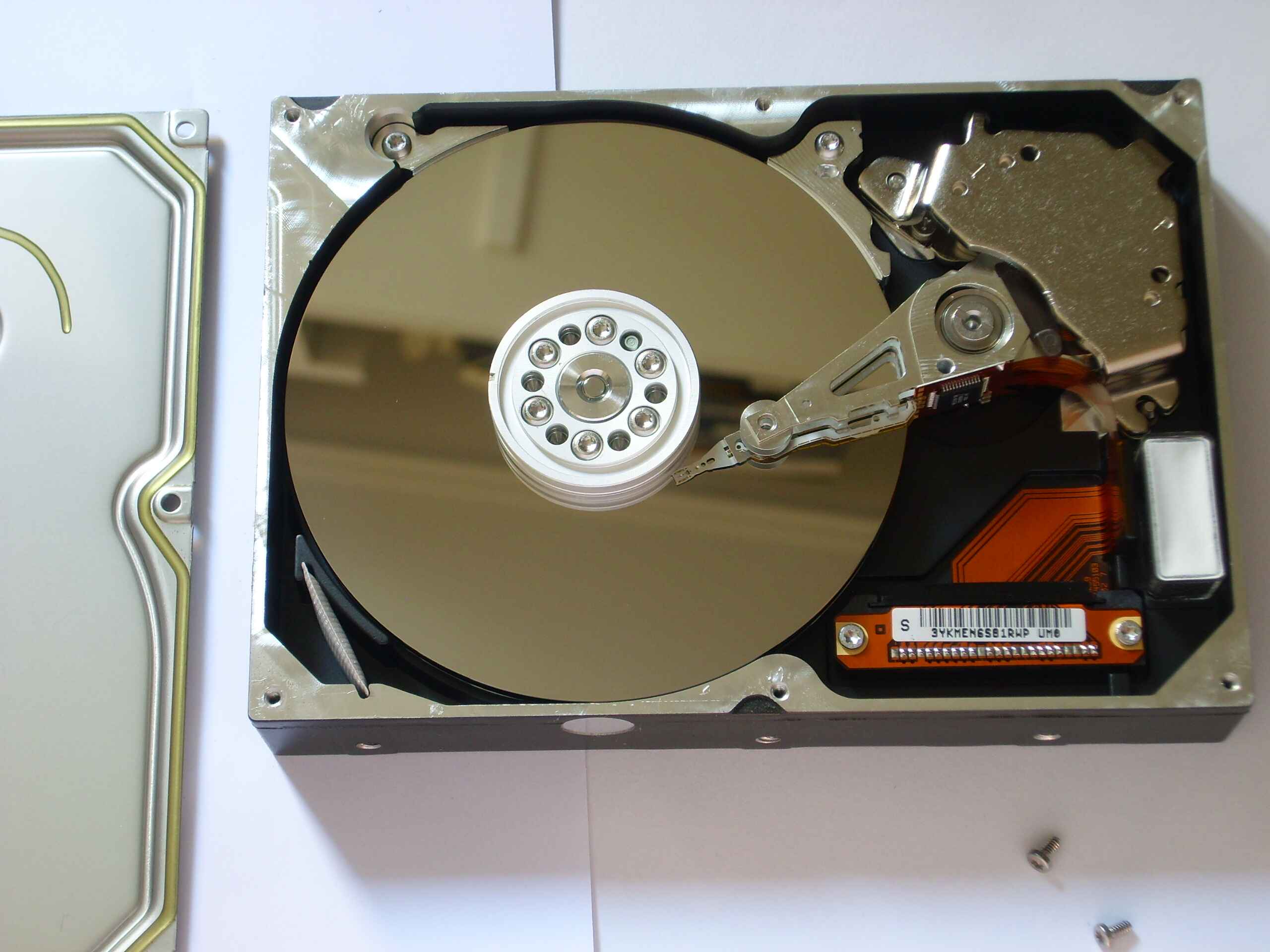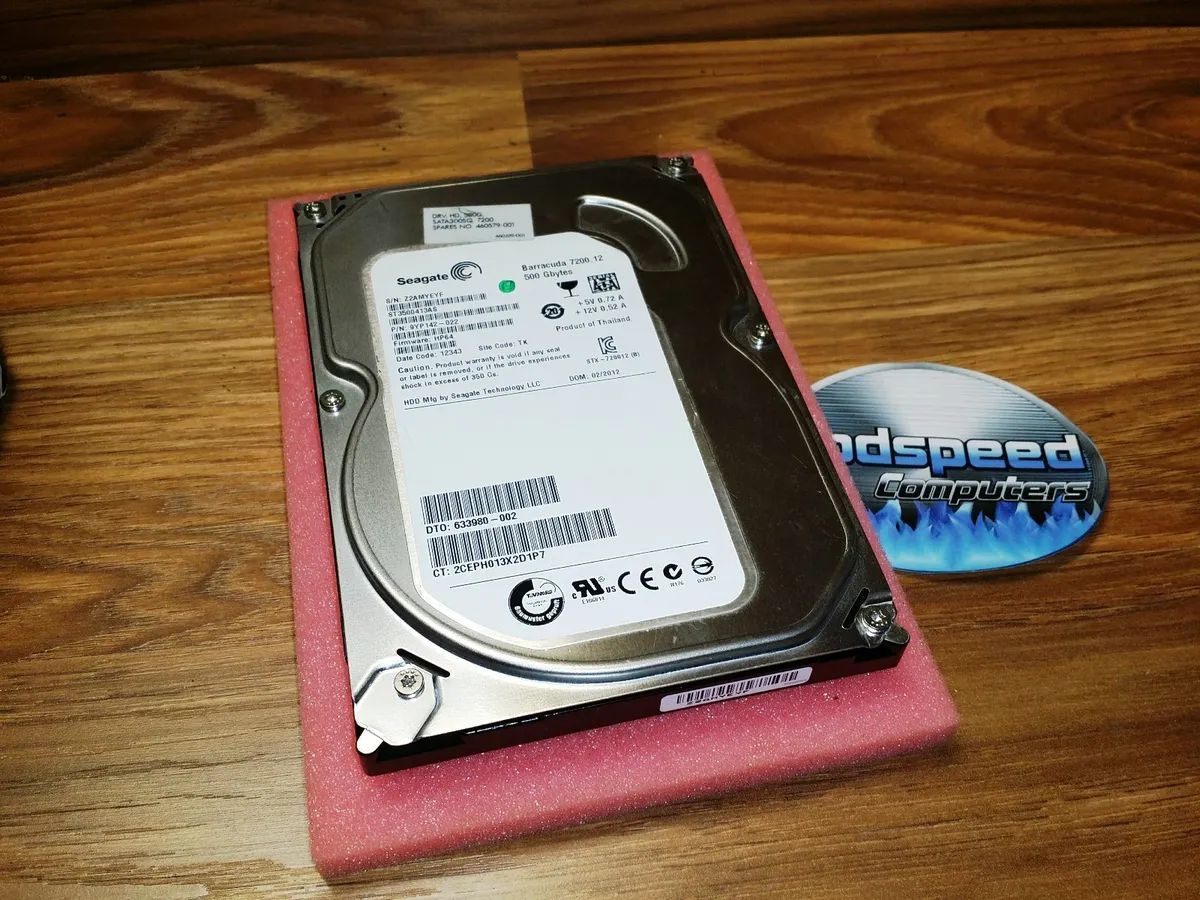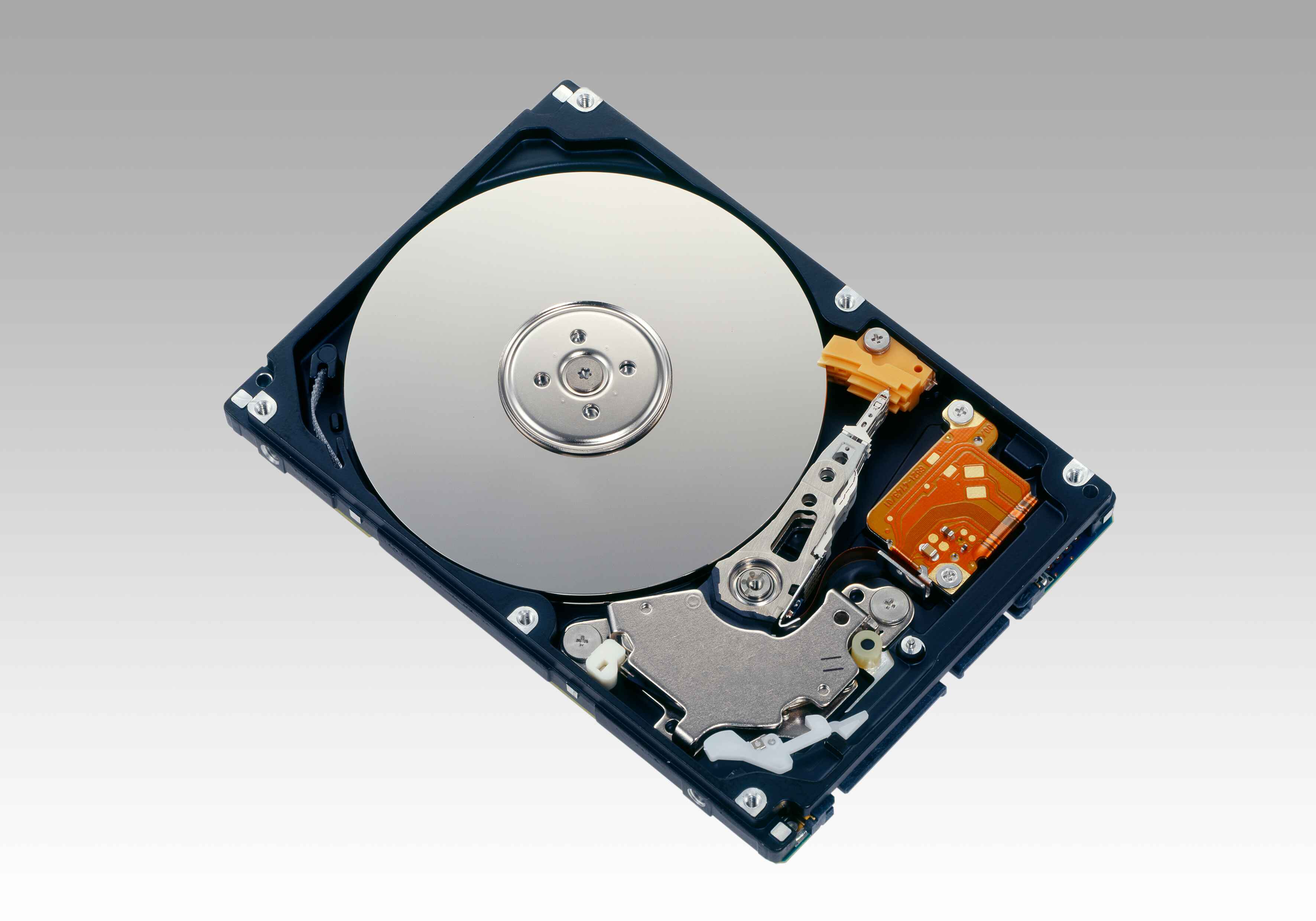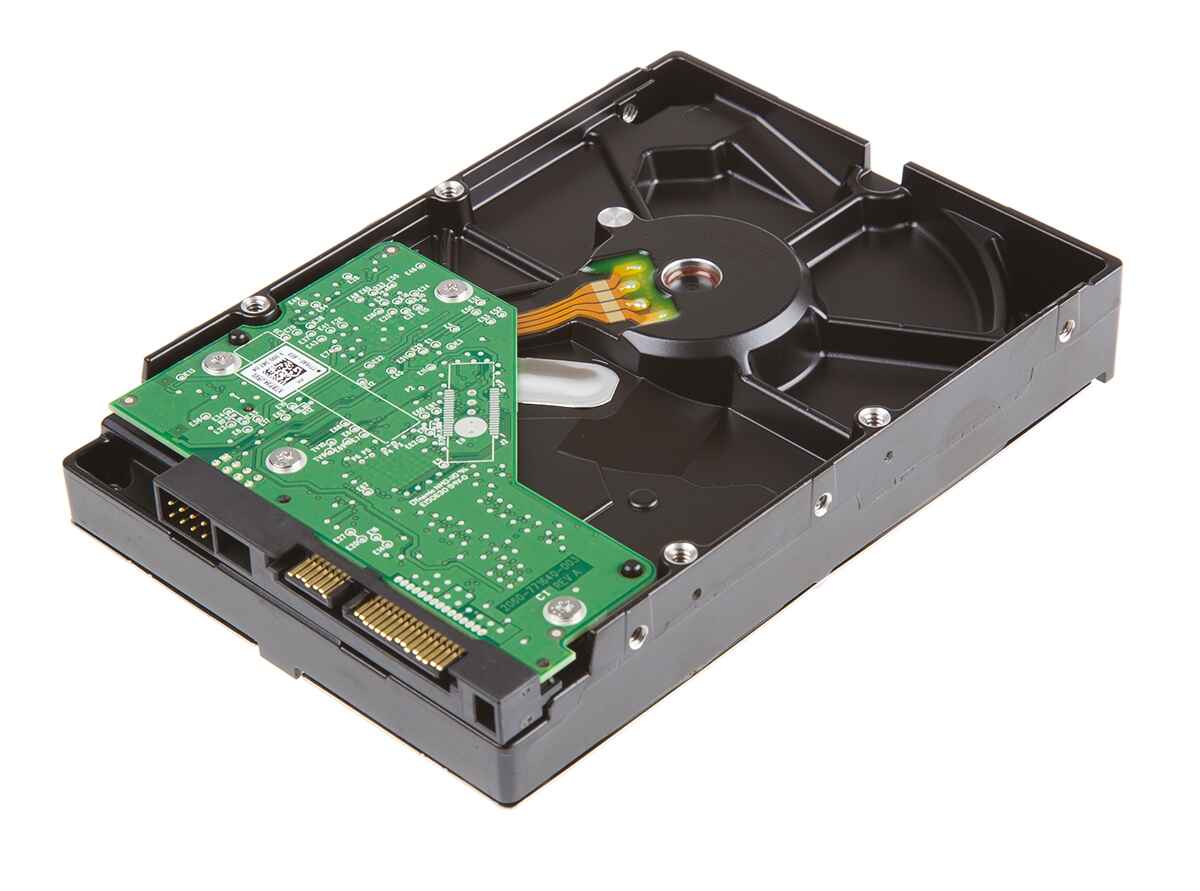Introduction
A hard disk drive (HDD) is the primary storage device in computers and other electronic devices. It consists of multiple circular disks called platters, which are coated with a magnetic material. One of the key components of a hard disk drive is a track, where data is stored and accessed. In this article, we will explore what a track is, its structure, functions, and other important aspects related to it.
A track on a hard disk drive can be visualized as a concentric circle on the platter surface. It serves as a storage unit and is divided into smaller sectors. Each sector can hold a fixed amount of data, typically 512 bytes. Tracks are organized in a spiral pattern, starting from the outer edge of the platter and moving towards the center. This arrangement allows for efficient access to data by the read/write heads.
The structure of a track includes two main components: the data area and the servo area. The data area is where the actual data is stored in the form of magnetized binary patterns. It is divided into sectors, each of which is identified by a unique address. The servo area, on the other hand, contains servo information that helps in accurately positioning the read/write heads over the track during data read/write operations.
The primary function of a track is to store and retrieve data. When data is written to the hard disk drive, it is magnetically encoded onto the track in binary form. Similarly, when data needs to be read, the read/write heads scan the track and interpret the magnetic patterns to retrieve the stored information. This process happens at a very high speed, enabling quick access to data stored on the hard disk.
Track density refers to the number of tracks per unit of disk space. Advances in technology have allowed for higher track densities, meaning that more data can be stored on a given surface area of the platter. Higher track density leads to greater storage capacity, which is a crucial factor in the development of hard disk drives.
Track skew is another important concept related to tracks. It refers to the slight angular offset of tracks to ensure that the read/write heads cover the entire track width. By introducing a small angle, the heads are able to avoid unnecessary overlaps and gaps, resulting in optimal data reading and writing efficiency.
Track formatting is the process of dividing the tracks into sectors and configuring them for data storage. During this process, each sector is assigned a unique identifier, which enables the operating system to locate and access specific data on the hard disk. Track formatting also involves error checking and correction mechanisms to ensure the integrity of the stored data.
In the event of track errors, such as the loss of magnetic patterns or physical damage to the track, modern hard disk drives utilize sophisticated error recovery techniques. These techniques involve redundancy checks, error correction codes, and other mechanisms to recover the lost or corrupted data and ensure data reliability.
In summary, tracks on a hard disk drive play a vital role in storing and retrieving data. Understanding their structure, functions, and related concepts can help us appreciate the inner workings of this crucial storage device in our computers and electronic devices.
Definition of a Track
A track on a hard disk drive can be defined as a concentric circle on the surface of a platter where data is stored and accessed. It is a fundamental component of the storage system that enables the organization and retrieval of data. Think of a track as a highway where data travels, allowing the read/write heads to quickly locate and access the necessary information.
The structure of a track consists of a data area and a servo area. The data area is where the actual data is stored in binary format. It is divided into smaller sectors, each with a fixed capacity to hold data. These sectors are like individual compartments within the track, providing a systematic arrangement for storing and retrieving data. The servo area, on the other hand, contains servo information that helps in accurately positioning the read/write heads over the track during data read/write operations. It serves as a reference point for the read/write heads to ensure precise tracking on the platter surface.
The primary function of a track is to store and retrieve data. When data needs to be written to the hard disk drive, it is encoded magnetically onto the track. This encoding process involves altering the magnetic properties of the platter surface in specific patterns to represent the binary data. The read/write heads then read these magnetic patterns and convert them back into meaningful data when retrieval is needed.
Tracks are organized in a spiral pattern on the platter surface. The outermost track is the longest, encompassing a larger circumference, while the innermost track is the shortest. This arrangement allows for efficient packing of data and reduces the distance the read/write heads need to travel when accessing different tracks.
Track density is a crucial aspect related to tracks. It refers to the number of tracks that can be accommodated within a given unit of disk space. Advances in technology have allowed for higher track densities, resulting in greater storage capacity. Higher track density means more data can be stored on the same physical surface area of the platter, leading to increased storage capacities in modern hard disk drives.
In summary, a track on a hard disk drive is a concentric circle on the surface of a platter where data is stored and accessed. It serves as a highway for data, allowing the read/write heads to quickly locate and retrieve the necessary information. Understanding the definition and function of a track helps us appreciate the intricate workings of a hard disk drive and its role in our everyday computing tasks.
Structure and Components of a Track
A track on a hard disk drive is composed of various components that work together to store and retrieve data efficiently. Understanding the structure and components of a track provides insights into the inner workings of the storage system. Let’s take a closer look at the key elements that make up a track.
The data area is one of the main components of a track. It is where the actual data is stored on the platter surface. The data area consists of a series of sectors, each with a fixed capacity to hold data. These sectors act as containers for storing binary information magnetically. The size of each sector is typically 512 bytes, though it may vary depending on the specific hard disk drive model.
Another essential component of a track is the servo area. The servo area contains servo information that helps accurately position the read/write heads over the track during read/write operations. It serves as a reference point for the positioning mechanism of the read/write heads. By using the servo information, the hard disk drive can precisely align the read/write heads over the proper track, ensuring accurate data retrieval and storage.
Tracks are organized in a spiral pattern on the platter surface. This arrangement starts from the outer edge of the platter and moves inward toward the center. The spiral pattern allows for efficient organization of tracks, reducing the distance the read/write heads need to travel when accessing different tracks. As a result, it enables faster data retrieval and storage operations.
The structure of a track also includes physical elements such as the platter surface and the read/write heads. The platter surface is where the magnetic data is stored. It is made from a non-magnetic material that is coated with a thin layer of magnetic material. The read/write heads, on the other hand, are small electromechanical devices responsible for reading and writing data on the platter surface. They are positioned above the track during operation and are responsible for the movement and interpretation of magnetic patterns.
In addition to the main components, there are other factors that affect the structure of a track. One important aspect is track density. Track density refers to the number of tracks that can be accommodated within a given unit of disk space. Advances in technology have allowed for higher track densities, resulting in increased storage capacities of hard disk drives.
The structure and components of a track work together harmoniously to ensure efficient data storage and retrieval. Understanding these aspects provides a deeper appreciation for the complexity and functionality of hard disk drives and their role in modern computing.
Function of a Track
A track on a hard disk drive has a crucial function in the storage and retrieval of data. It serves as a designated storage unit where data is organized and accessed. Understanding the function of a track is essential in comprehending how data is stored, retrieved, and managed on a hard disk drive.
The primary function of a track is to store and retrieve data. When data needs to be written to the hard disk drive, it is magnetically encoded onto the track’s surface. This encoding process involves altering the magnetic properties of the platter in specific patterns to represent binary data. Each track is divided into sectors, which act as individual compartments for organizing the data. When data needs to be read, the read/write heads scan the track and interpret the magnetic patterns, converting them back into meaningful information.
Efficient data storage is another function of a track. Tracks are organized in a spiral pattern on the platter surface, starting from the outer edge and moving inward. This arrangement optimizes the usage of disk space and reduces the distance the read/write heads need to travel when accessing different tracks. The spiral pattern enables faster data retrieval by minimizing seek time, which is the time it takes for the read/write heads to move from one track to another.
Tracks also play a role in positional accuracy. Each track contains a servo area that contains servo information. This information helps in accurately positioning the read/write heads over the track during data read/write operations. By utilizing the servo information, the read/write heads can align precisely with the desired track, ensuring accurate data retrieval and storage.
Another function of a track is data organization. The data area within each track is divided into sectors, allowing for a systematic arrangement of data. Each sector has a fixed capacity, typically 512 bytes, to hold data. This organization facilitates efficient data retrieval by enabling quick and targeted access to specific sectors within a track.
Track density also contributes to the function of a track. Advances in technology have allowed for higher track densities, which means that more tracks can be accommodated within a given unit of disk space. Higher track density translates to increased storage capacity, allowing for larger amounts of data to be stored on a hard disk drive.
In summary, the function of a track on a hard disk drive includes storing and retrieving data, optimizing data storage, ensuring positional accuracy, organizing data efficiently, and contributing to the overall storage capacity. A track is a critical component that enables the effective operation of a hard disk drive, making it a vital part of modern data storage and retrieval systems.
Track Density
Track density is a key measure in the storage capacity of a hard disk drive. It refers to the number of tracks that can be accommodated within a given unit of disk space. As technology advances, track density increases, allowing for larger storage capacities and more data to be stored on a hard disk drive.
Advancements in manufacturing processes and improvements in read/write head technology have led to higher track densities. With higher track density, the physical space between tracks is reduced, enabling more tracks to be packed into a smaller area on the platter. This increased packing density contributes to the overall storage capacity of the hard disk drive.
Track density is typically measured in tracks per inch (TPI) or tracks per centimeter (TPC), depending on the unit of measurement used. A higher track density means more tracks per given distance, resulting in a higher storage capacity. This allows for storing larger amounts of data, such as documents, photos, videos, and other files, on a single hard disk drive.
Higher track density not only allows for greater storage capacity but also improves data access speed. When the read/write heads need to access specific tracks, a higher track density means that the heads do not have to travel as far to reach the desired track. This reduces the seek time, which is the time it takes for the heads to move from one track to another. The reduced seek time contributes to faster data retrieval and improved overall performance of the hard disk drive.
Increasing track density poses challenges as well. Higher track density makes it more critical to ensure accurate positioning of the read/write heads over the correct track. Any misalignment can result in data read or write errors, leading to compromised data integrity. To address this, modern hard disk drives incorporate advanced positioning technologies and servo systems to maintain precise track alignment and optimize data access.
It’s important to note that the track density of a hard disk drive is determined during the manufacturing process and cannot be changed by the end-user. However, it is a crucial factor to consider when selecting a hard disk drive, as higher track density is indicative of greater storage capacity and potentially faster data access speeds.
In summary, track density plays a significant role in the storage capacity and performance of a hard disk drive. Higher track density allows for increased storage capacity and faster data access speeds. As technology continues to advance, track density will continue to improve, enabling even greater storage capacities and more efficient data storage and retrieval in the future.
Track Skew
Track skew is an important concept related to the arrangement of tracks on a hard disk drive. It refers to the slight angular offset of tracks to ensure optimal data reading and writing efficiency. By introducing a small angle, the read/write heads can cover the entire track width without unnecessary overlaps or gaps, resulting in improved performance and data integrity.
The main purpose of track skew is to ensure that the read/write heads align perfectly with the tracks during data read/write operations. If the tracks were arranged parallel to each other without any skew, there would be a risk of misalignment between the track width and the head width. This misalignment could result in gaps or overlaps between adjacent tracks, leading to data loss or corruption.
The track skew angle is carefully calculated and implemented during the manufacturing process of hard disk drives. It is typically a small angle, and the amount of skew varies depending on the specific drive design and manufacturer. The skew angle helps in aligning the read/write heads precisely with the corresponding tracks, minimizing the chances of read or write errors due to misalignment.
Increasing track density and advancements in read/write head technology have made track skew even more crucial. With higher track densities, the physical space between tracks becomes narrower, leaving less room for error in alignment. Track skew becomes essential to ensure that the read/write heads cover the entire width of each track without overlapping or leaving gaps.
Track skew also contributes to reducing data crosstalk, which is a phenomenon where data from adjacent tracks interferes with each other due to proximity. With the small angular offset introduced by track skew, the read/write heads can better isolate the data on each track, reducing the potential for crosstalk and enhancing overall data integrity.
Modern hard disk drives employ advanced servo systems and positioning technologies to maintain accurate track skew during normal drive operation. These systems continuously monitor and adjust the positioning of the read/write heads, compensating for any deviation and ensuring optimal track alignment.
In summary, track skew plays a crucial role in maintaining optimal data reading and writing efficiency in hard disk drives. By introducing a small angular offset, track skew ensures that the read/write heads align correctly with the tracks, minimizing read/write errors, reducing crosstalk, and enhancing data integrity. As technology advances and track densities increase, the importance of track skew becomes even more significant in achieving efficient and reliable data storage and retrieval.
Track Formatting
Track formatting is a crucial process that takes place during the manufacturing of a hard disk drive. It involves dividing the tracks into sectors and configuring them for efficient data storage and retrieval. During track formatting, each sector is assigned a unique identifier, enabling the operating system to locate and access specific data on the hard disk.
One of the primary purposes of track formatting is to establish a consistent structure for storing data on the hard disk drive. The formatting process divides each track into smaller units called sectors. These sectors act as individual compartments for organizing the data. Typically, each sector has a fixed capacity of 512 bytes, although the specific sector size can vary depending on the drive’s configuration.
Each sector within a track is assigned a unique identifier known as a sector address. The sector address serves as a reference point for the operating system to locate and retrieve data from the desired sector. By using sector addresses, the hard disk drive can efficiently organize and access data, providing fast and targeted data retrieval.
Track formatting also involves incorporating error checking and correction mechanisms to ensure data integrity. Each sector contains additional bits for error detection and correction. These bits, known as error correction codes (ECC), help identify and correct errors that may occur during data read or write operations. If issues are detected, the ECC allows the hard disk drive to retrieve and correct the data, ensuring data reliability.
In addition to the data area, track formatting also includes the servo area. The servo area contains servo information that assists in accurately positioning the read/write heads over the track during data read/write operations. The servo information serves as a reference point to ensure precise alignment, contributing to the overall efficiency of data retrieval.
Track formatting is typically performed during the manufacturing process of hard disk drives. However, users can also format tracks for specific purposes, such as partitioning the disk or preparing it for a particular operating system. Formatting a track involves erasing all data on the hard disk drive, creating the necessary file system structures, and allocating space for data storage.
It’s important to note that formatting a track erases all data stored on the drive, so it is crucial to back up any important data before performing the formatting process.
In summary, track formatting is a critical process in the manufacturing of hard disk drives. It involves dividing tracks into sectors, assigning sector addresses, incorporating error checking and correction mechanisms, and configuring the servo area. By organizing tracks and sectors in a systematic manner, track formatting ensures efficient data storage, retrieval, and data integrity on the hard disk drive.
Track Errors and Recovery
In the operation of a hard disk drive, track errors can occur due to various factors such as magnetic degradation, physical damage, or read/write head misalignment. These errors can lead to data corruption or loss if not addressed effectively. Fortunately, modern hard disk drives employ advanced error recovery techniques to detect and recover from track errors, ensuring data integrity.
When a track error occurs, the hard disk drive’s error correction mechanisms come into play. These mechanisms utilize redundancy checks and error correction codes (ECC) to identify and correct errors that may have occurred during data read or write operations. The ECC bits that are included in each sector’s formatting allow the hard disk drive to detect errors and recover corrupted data. If errors are detected, the ECC algorithms can reconstruct the original data from the redundant information, restoring the data to its correct form.
In addition to error correction, hard disk drives also have built-in error detection mechanisms. These mechanisms can identify and flag sectors with uncorrectable errors. When such sectors are encountered during data read operations, the hard disk drive will attempt to recover the data using various techniques, such as retries or alternative data sources. If all recovery attempts fail, the hard disk drive will report the error to the operating system, indicating that the data in that sector cannot be recovered.
Track errors can also be caused by physical damage to the platter surface or read/write heads. In such cases, the hard disk drive may employ techniques like servo tracking and positioning adjustments to compensate for any misalignment or damage. The servo system continuously monitors the position of the read/write heads and makes necessary adjustments to ensure accurate tracking and data retrieval.
In situations where track errors are severe or cannot be recovered using the built-in error correction mechanisms, data recovery services may be necessary. Data recovery specialists employ specialized equipment and techniques to retrieve data from damaged sectors or malfunctioning hard disk drives. However, these services can be costly and are usually considered as a last resort when other recovery methods fail.
Regular backups are an essential preventive measure to mitigate the impact of track errors. By maintaining up-to-date backups of important data, any data loss due to track errors can be minimized or even eliminated. Regularly scheduled backups help ensure that the most recent version of data is preserved and can be quickly restored in the event of a track error or other data loss scenarios.
In summary, track errors can occur in hard disk drives due to various factors, including magnetic degradation, physical damage, or alignment issues. Modern hard disk drives employ robust error recovery techniques, such as error correction codes and redundancy checks, to detect and recover from track errors, ensuring data integrity. However, in severe cases, data recovery services may be necessary, and regular backups are crucial as a preventive measure against data loss.
Conclusion
Tracks play a vital role in the functioning and efficiency of hard disk drives. Understanding the definition, structure, and components of a track provides insights into how data is stored, accessed, and organized on a hard disk drive.
Tracks, as concentric circles on the platter surface, serve as storage units, divided into sectors that hold binary data. The read/write heads scan the tracks to retrieve and interpret the magnetic patterns, enabling quick access to stored information. The spiral pattern of tracks optimizes data packing and reduces seek time, contributing to faster data retrieval.
Track density, determined by the number of tracks per unit of disk space, influences storage capacity. Advancements in technology have allowed for higher track densities, leading to increased storage capacities in modern hard disk drives.
Track skew, a slight angular offset of tracks, ensures proper alignment of read/write heads and reduces errors. It also helps minimize data crosstalk between adjacent tracks, enhancing overall data integrity and performance.
Track formatting involves the division of tracks into sectors with unique identifiers for efficient data storage and retrieval. Error correction mechanisms and servo information in each sector contribute to data reliability and accurate positioning of read/write heads.
Track errors can occur due to various factors, but modern hard disk drives employ sophisticated error recovery techniques. These techniques include error correction codes, redundancy checks, and servo systems to detect, correct, and recover from errors.
Regular backups are essential for mitigating the impact of track errors and safeguarding data. Maintaining up-to-date backups ensures that data can be easily restored in the event of severe track errors or other data loss scenarios.
In conclusion, tracks are fundamental components of hard disk drives, enabling efficient data storage, retrieval, and organization. Understanding their structure, function, and the challenges associated with track errors provides a deeper appreciation for the inner workings of hard disk drives and the importance of data integrity in modern computing.

























